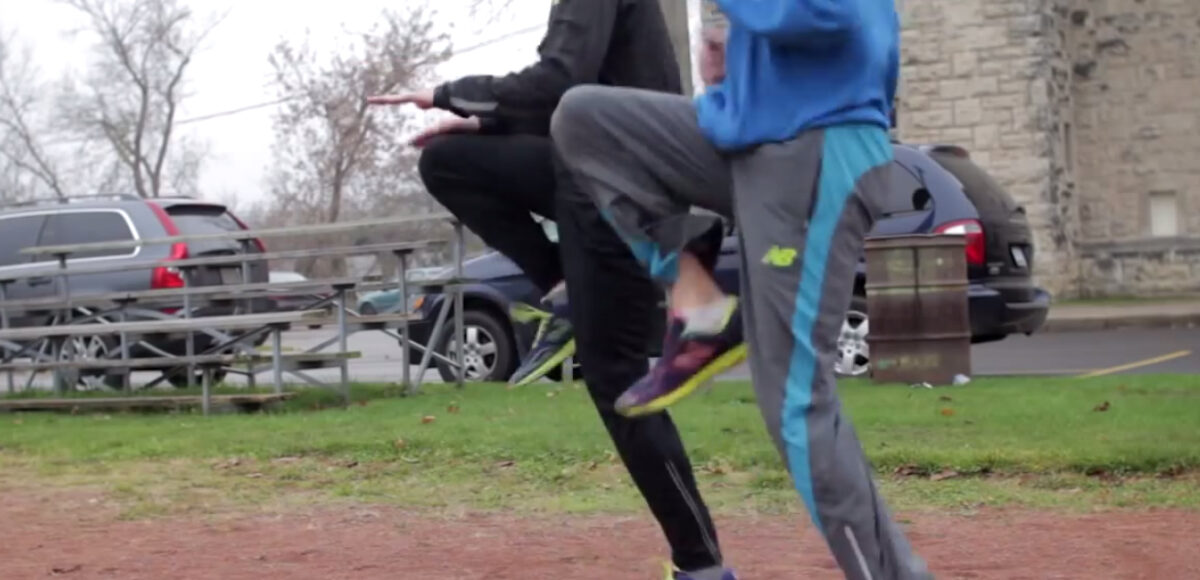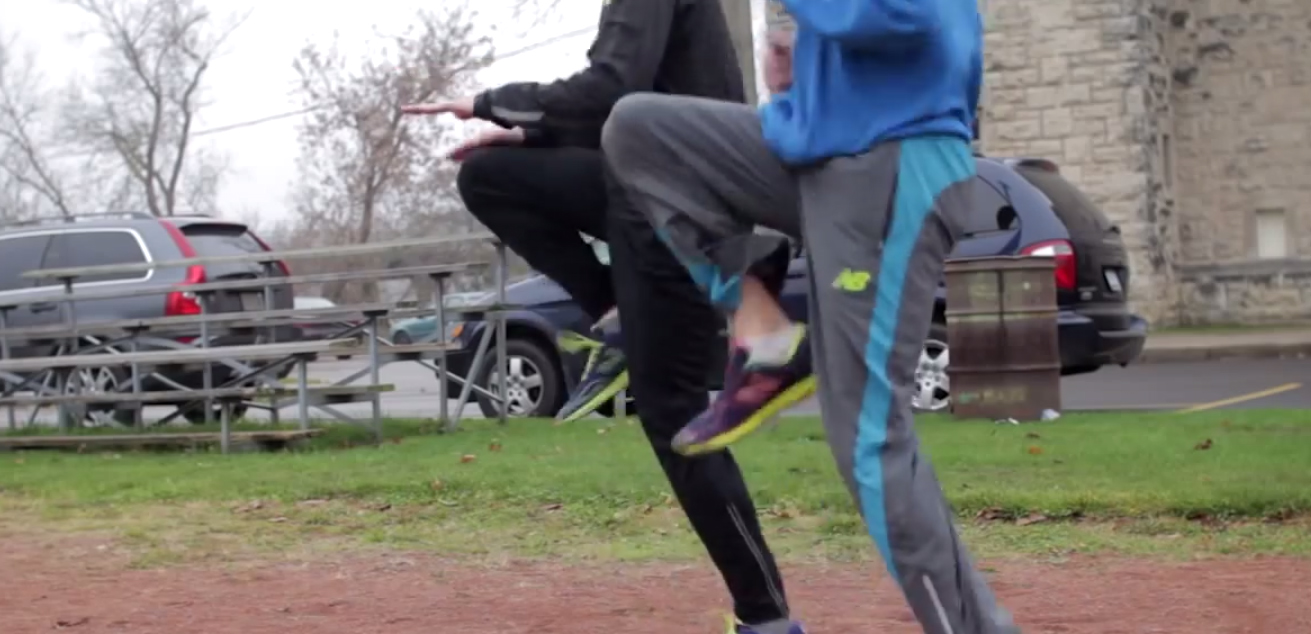Four drills every runner should do
Elite 1500m runner Julia Kawamoto demonstrates a variety of drills discussed in the January 2012 issue of Canadian Running.

 Look around at the start of your next road race: you’ll see runners performing all sorts of odd-looking drills, skipping, hopping and shuffling down the street before the race begins. What’s the point? Borrowed from the training routines of Olympic athletes, these form drills serve a variety of purposes, ranging from warming up and increasing range of motion to fine-tuning motor patterns that will help you run faster and more efficiently.
Look around at the start of your next road race: you’ll see runners performing all sorts of odd-looking drills, skipping, hopping and shuffling down the street before the race begins. What’s the point? Borrowed from the training routines of Olympic athletes, these form drills serve a variety of purposes, ranging from warming up and increasing range of motion to fine-tuning motor patterns that will help you run faster and more efficiently.
“The more efficient a runner is, the lower the physiological stress will be,” says Wynn Gmitroski, the lead coach at the National Athletics Centre in Victoria. The result: “more in the tank at a given workload, and for the finish of the race.” Form drills help achieve this by improving the “skill” of running, breaking your stride down into its component parts – picking the feet up off the ground quickly, driving the knee upward, snapping your leg back – and helping you become more efficient at each part.
For Dylan Wykes, a Vancouver-based runner who has the second fastest marathon in Canadian history, the drills help to remind him of the “little things” that distinguish an efficient stride from a sloppy one. “I think the strength and flexibility gained from these drills helps me with my form,” he says, “especially in the latter stages of longer races when form typically starts to deteriorate.”
When and How
Try the drills as part of a dynamic warm-up, following 10 to 20 minutes of easy jogging and some dynamic stretching. The idea isn’t to perform them to exhaustion; instead, do them while you’re still fresh enough to focus on executing them correctly. “You’re better off not doing the drill than doing it wrong,” says Gary Reed, the retired national record holder over 800m. Focus on quality, not quantity, he advises.
You can also vary how much and how often you do them throughout the year. Gmitroski’s athletes insert the drills into their warm-up routine two to five times a week; more frequently when they’re training to build strength and power, and less frequently as they approach races. Dave Scott-Thomas, the head coach of the University of Guelph and the Speed River Track and Field Club, uses them after workouts to build strength during the fall cross-country season. In the spring, on the other hand, his athletes use them as part of their warm-up before fast track workouts.
There’s an endless variety of drills that you can try, including marching drills, jogging drills, skipping drills, hurdle drills, and so on. Start with the four basic ones suggested here; do each one for 10 to 25 metres at a time.
Four Warm-Up Drills
1. Ankling (fast feet)
The goal is to pick your feet up off the ground quickly, while keeping your ankle “dorsiflexed” (a 90-degree angle at the ankle joint). Take small steps and land only on the balls of your feet, pumping your arms and bending your knees only slightly. Start by “ankling” on the spot, then begin traversing forward slowly once you get the hang of it.
2. A-march and A-skip (high knees)
This drill involves driving your knees upward, so that your hip joint is bent past 90 degrees. Like the ankling drill, swing your arms so that your right arm is forward when your left knee is up, and vice versa. Once you’re comfortable with the high-knee march, add a skip between each step. Keep a slight forward lean and a dorsiflexed ankle.
3. B-skip (the paw-back)
The B-skip is the trickiest to learn. It begins like the A-skip, but at the point when your knee is highest, extend your knee so that your leg is pointing almost straight forward, and then snap your leg back down toward the ground. This powerful hip snap is referred to as the “paw-back,” and it teaches the runner to contact the ground not on the heel but on the forefoot slightly in front of the body.
4. C-march and C-skip (butt kicks)
The C-march looks a bit like the opposite of the A-march. Instead of driving your knee upward, keep it pointing down and snap your heel back and up toward your butt. The goal here is make the recovery phase of your running gait more efficient: it takes less energy to swing your leg forward if the heel is high, shortening the length of the leg’s “lever.”
Jon-Erik Kawamoto, is a Strength and Conditioning Specialist and regular contributor to Canadian Running. You can visit his webpage at www.strongerrunner.com


